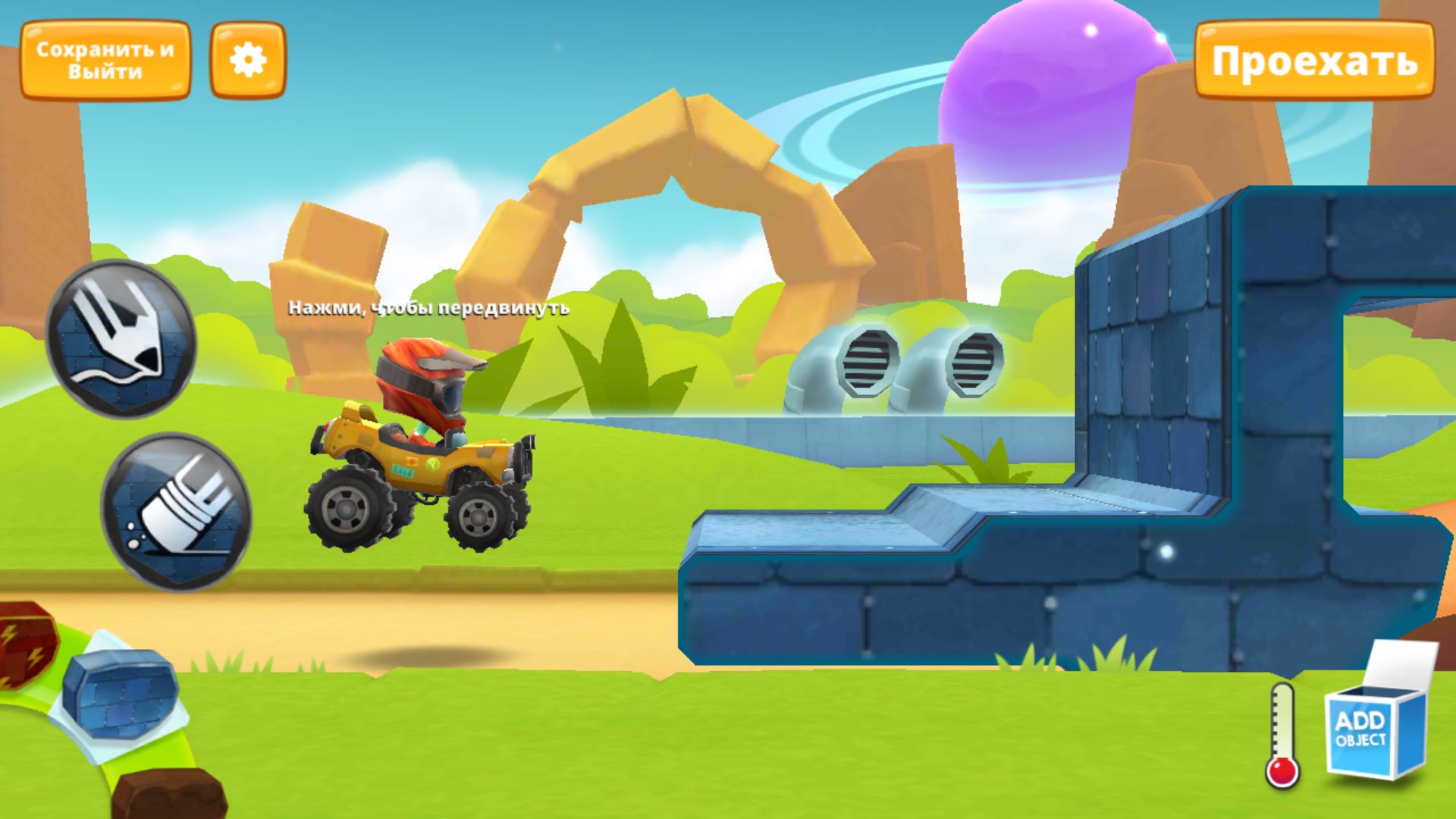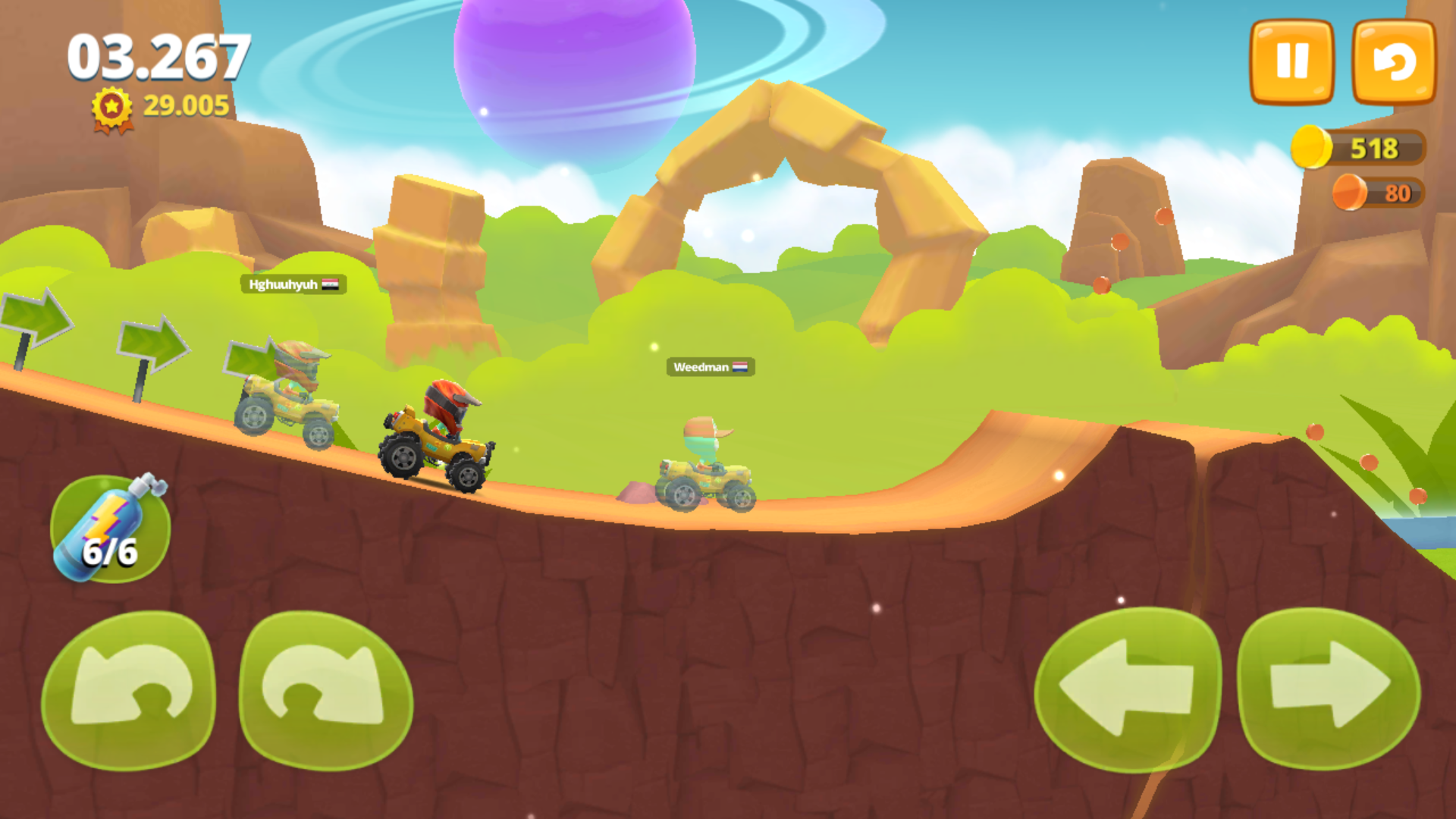Traplight: "Players have made 7 million levels for Big Bang Racing"
For the Big Bang Racing game from the Finnish Traplight, users have made 7 million levels. We talked with the team about the experience of working on a project in which user content is at the forefront
To the questions App2Top.ru The answer was Jari Paananen, co-founder and art director of Traplight.
This material is published as part of the “Finnish Gaming Industry” cycle. Its launch is timed to coincide with the event about the Finnish gaming industry Finish Game Day 2017. The event will take place on June 13. It is part of the White Nights Conference St.Petersburg 2017, which starts a day later, on June 14.
Alexander Semenov, Senior Editor App2Top.ru : Let‘s start with the story. I know that you are from a small Finnish town. Tell me how you got together and started making games?

Jari Paananen, Co-founder and Art Director of Traplight
Jari Paananen: The backbone of the team has one common story. We worked together in a company called Universomo. She was based in Tampere and was engaged in the development of mobile games.
We worked there with such brands as Star Wars, Pixar, Indiana Jones and many others of this level. At Universomo, we learned how to work with world-class IP.
The appearance of the App Store, which took place after the release of the iPhone, opened up new horizons for small mobile teams, which we quickly took advantage of.
But, look, the company was founded in 2010, but the first game appeared only six years later – in 2016. Why did it take so long to release?
Yari: It’s not quite like that. At the very beginning, we released The Hero game for iOS. It could be called successful for a team of three people (there weren’t many of us then), but it didn’t have long-term prospects. So we took up subcontracting. We then worked with such large Finnish companies as RedLynx and Supercell, creating everything from art to full–fledged games.
In 2013, we suspended all contracts, raised some money and started working on our own technology and vision.

And how many of you are there now?
YARI: We now have a solid team of 26 people. For now, we plan to keep it in this form. We are actively working on new concepts, developing prototypes and at the same time regularly launch additions to Big Bang Racing.
Since we’re talking about your main project, let’s talk about how it started.
YARI: His story started with the creation of a level editor, which we made for ourselves. And almost immediately we saw the potential for User Generated Content (UGC) in this.
When the game was just being prototyped, we all tried to follow the path of Little Big Planet. That is, they created a game in which it was possible to perform any actions within the screen. But then we decided to narrow the concept down to racing.
The decision was made after we realized the potential of our technology and our vision, realized that other games in other genres could be made on their basis. It didn’t make sense to cram everything into one game at once.

That is, you did not come from the genre, but from the development tools. However, the genre on which you stopped, as I understand it, was not chosen by chance. He’s so very Finnish. I have a feeling that one of the main sources of inspiration for many Finnish developers today is Elasto Mania. The Finns, starting from it, made such games about physics and motorcycles as Trials Frontier, Hill Climb Racing, Bike Baron. And now – in the same row with them – Big Bang Racing. Where did the Finns get such a love for Elasto Mania, a game about physics and motorcycles?
YARI: You understand, there is an element of “sudden fan” in these games. We grew up playing games like Elasto Mania. And she, for sure, was one of those games that we spent too much time on at the time.
For Finns, such games cause “sisu”: the will to overcome a gigantic number of failures. Closing it because of a fit of rage and irritation is not an option.
UGC is sewn into the genetic code of your game. The player not only passes or does not pass the levels on a buggy / motorcycle, but also creates them himself. In addition to the fact that this partially solves the problem with the lack of content, it also, as you noted in one of the interviews earlier, allowed you to refuse to buy traffic, to grow on one viralka. So you still don’t buy it?
Yari: There is such a story here.
We experimented with a large number of user acquisition methods as traditional channels became (and still are) more and more expensive.
The presence of UGC in the game makes the game both more social and more viral at once. People want to share what they have done, plus, thanks to this, the game is better suited for streaming, more friendly to those who talk about games.
The latter eventually became our main promotion strategy: to be friends and work with streamers.

How else did you promote the game?
YARI: We focused on our strengths.
UGC is our social feature, what distinguished us from others. And from the very beginning we kept in touch with Apple and Google, listened to their feedback and implemented the solutions they offered. We work with opinion leaders in the same way: we introduce those chips that help them do their job, which, accordingly, helps us.
How does UGC affect sales and retention?
Jari: User content is such an integral part of our game that it is very difficult to measure how it would be perceived without it. However, we do see a connection between engagement and creation – the more a player creates, the more involved he is.
We do not monetize the creative component of our game, only reward for creativity. So UGC in our case is not a monetization channel, but something that involves players in the project.

What are the pitfalls in the development and operation of games, where a large role is assigned to user content?
Yari: UGC is a pretty big component in terms of connecting to any game. It’s not just a level creation editor. Along with it comes the need to evaluate, moderate and distribute good content, work on server technologies, social functionality for players and content creators, and so on, and so on…
It’s a big beast.
You need to take into account all the parties that work with the game: those who make levels for it, and ordinary players who only ride on them, and the guys who talk about the game in YouTube videos. And if so, then we need a simple, understandable design of all components.
Thanks to Big Bang Racing, we have now accumulated tons of knowledge about all this and we will use them in our future games.
By the way, UGC also brings an understanding of the game as a service, as users begin to feel control over the entire game.

What about the content of the game for which the content is made by users?
YARI: The game has enough content for her whole life. Players have made 7 million levels. So our task now is to please the part of the audience that creates the levels. If the level creators are satisfied and engaged, we will have an infinite number of great levels to play.
The game was released a year ago, in the first month it managed to gain 3 million downloads. What happened to the project after, in what direction did you work?
We are constantly releasing updates, listening to players and opinion leaders and trying to implement the features that will suit them best.
For example, we have a whole new mode – Tournaments, in which we can highlight opinion leaders.
What’s next in the company’s plans?
Jari: We will support Big Bang Racing as it is the best way to learn more about UGC.
We see our task in continuing to develop games where the main fiddle is played by user content, so we are constantly looking for new opportunities. We are confident that we are on the right track, as UGC brings a lot of positive elements to any game concept. Now we are analyzing various games and genres, writing concepts, studying UGC and hope to get the first new prototypes soon. However, we are not in a hurry to release the game. Our choice is to explore new ideas, not to publish for the sake of publishing.
You will be able to talk to Jari Paananen personally at Finish Game Day 2017 and at White Nights St.Petersburg 2017, where he will perform.
The editorial board thanks Oleg Paliy for his help in organizing the interview.